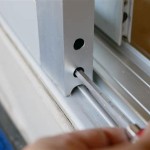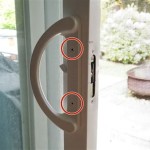DIY Exposed Aggregate Concrete Patio: A Comprehensive Guide
An exposed aggregate concrete patio is a beautiful and durable addition to any home. The unique finish, achieved by exposing the decorative aggregates embedded in the concrete, creates a textured and visually appealing surface. While professional installation is an option, creating an exposed aggregate patio yourself is achievable with careful planning and execution. This guide provides a comprehensive overview of the process, offering step-by-step instructions and essential tips for a successful DIY project.
Preparing the Site for Construction
The foundation of a successful exposed aggregate patio lies in meticulous site preparation. This includes:
- Determining the Patio's Dimensions and Layout: Carefully measure the area you intend to cover, considering the size of your desired patio space. Create a detailed layout plan, including any desired features like fire pits, walkways, or built-in seating. This ensures a visually pleasing and functional design.
- Clearing the Area: Remove any existing vegetation, debris, or structures that might interfere with the construction process. Ensure the ground is level and free of obstacles to facilitate smooth concrete pouring.
- Excavating the Foundation: Excavate the soil to the required depth for the patio base. The recommended depth varies based on local soil conditions and building codes. Consult with a building professional or research local regulations to determine the appropriate excavation depth.
- Creating a Compacted Base: Once excavated, compact the soil to create a firm and stable base. This prevents settling and ensures the patio's long-term stability. Consider using a compactor for this task, as it ensures thorough compaction.
- Laying a Gravel Base: A layer of gravel is essential for drainage and structural support. Spread a 4- to 6-inch layer of gravel over the compacted soil and compact it thoroughly. This creates a well-drained foundation for the concrete.
- Installing a Concrete Form: Construct a formwork using plywood or other suitable materials around the perimeter of the patio. This form serves as a mold for the concrete and ensures the desired shape and dimensions of the patio. Make sure the formwork is level and stable.
Mixing and Pouring the Concrete
Once the foundation is ready, the concrete mixture must be prepared and poured correctly. This process involves the following steps:
- Choosing the Right Concrete Mix: Opt for a concrete mix designed for outdoor use, suitable for the anticipated load and traffic patterns. A good option is a 5,000 psi blend, which offers excellent strength and durability.
- Mixing the Concrete: You can either purchase pre-mixed concrete from a supplier or mix the concrete yourself using the appropriate proportions of cement, sand, and gravel. Ensure the concrete mix is uniform and consistent for even curing and strength.
- Adding Aggregates: While concrete is still in the mixer, carefully add the desired decorative aggregates. Choose aggregates based on aesthetics, size, and color. A generous sprinkle of aggregates is essential for a strong and visually appealing exposed aggregate finish.
- Pouring the Concrete: Pour the concrete mix into the formwork, ensuring the concrete fills the entire space evenly. Use a shovel or wheelbarrow to transport the concrete to the formwork and spread it out smoothly.
- Leveling and Screeding: Use a screed board to level the concrete surface and ensure a smooth and consistent finish. Carefully work the screed board across the concrete, removing excess concrete and creating a level surface.
Exposing the Aggregates and Finishing
Once the concrete has been poured and leveled, it's time to expose the decorative aggregates and create the distinctive finish. This involves the following steps:
- Timing the Exposure: The key to a successful exposed aggregate finish is timing. You need to expose the aggregates while the concrete is still slightly wet but not completely hardened. This allows for the removal of excess cement paste without disturbing the aggregate placement. Typically, this can be done within 30-60 minutes after pouring the concrete.
- Using a Trowel or Rake: A trowel or rake is used to remove the excess cement paste that covers the aggregates. Gently scrape the surface of the concrete, revealing the embedded aggregates. Be careful not to disturb or dislodge the aggregates during this process.
- Washing the Concrete: Once the aggregates are exposed, thoroughly wash the concrete surface with a high-pressure hose. This will remove remaining cement paste and reveal the full beauty of the aggregates. Use a gentle stream of water to avoid damaging the concrete or dislodging the aggregates. Carefully wash the edges and corners of the patio for a seamless and polished finish.
- Curing the Concrete: After washing, allow the concrete to cure properly. Cover the patio with plastic sheeting to maintain moisture and prevent cracking. Avoid walking on the concrete until it has fully cured. Proper curing is essential for achieving the desired strength and durability of the exposed aggregate.

Exposed Aggregate Decorative Concrete How To

Diy Exposed Aggregate Concrete Patio

Exposed Aggregate Patios Pros Cons Ideas S Concrete Network

Flatten And Seal Exposed Aggregate Concrete Patio

11 Exposed Aggregate Concrete Patio Ideas

Diy Exposed Aggregate Concrete Patio

Exposed Aggregate Concrete Patio Designs Pavers Design

Pros And Cons Everything You Need To Know About Exposed Aggregate

Exposed Aggregate Concrete Can Make For A Beautiful And Rustic Driveway The Paver Sealer

Exposed Aggregate Sealing Power Washing Macomb Oakland Mi
Related Posts








